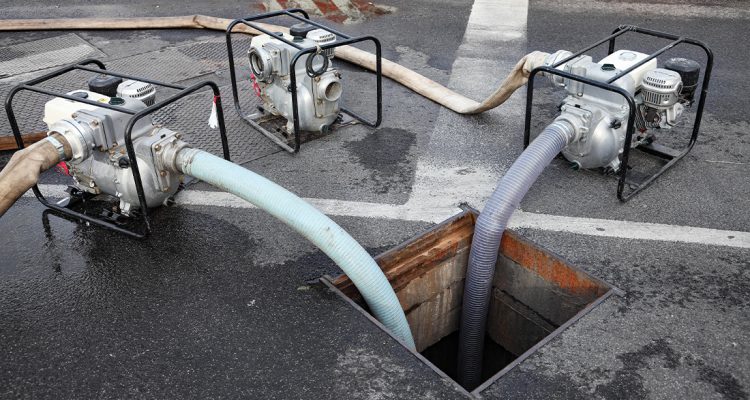Ground water is an issue for every job that involves below grade operation, and it’s important that industrial operators invest in the proper management of ground water. To protect the integrity of materials and ensure safe and comfortable operating conditions, operations can use dewatering pump technology to remove unwanted water from a site.
Particularly on projects that involve digging and excavation; underground mining operations; building and construction projects; or any site located near a waterfront or areas with heavy rainfall – the process of dewatering is critical.
Furthermore, Australia’s ongoing flood recovery projects have contributed to an increase in demand for effective dewatering pump solutions. And with the steady increase in rainfall, regions of the country that are positioned on low lying land will continue to require effective dewatering pump solutions.
The design and assembly of dewatering pump arrangements involves a host of complex engineered components including bearings, seals, and motors. As with any rotational moving equipment, bearings play a key role in the successful operation of dewatering pumps.
According to Nitin Verma, Business Development Manager for Industrial Solutions at NSK, the type of bearings that are used on pump applications can make or break the system’s performance. Nitin recently delivered an interesting presentation on pump bearings to the team at Motion Australia, and he shared with the team some key insights from his talk.
“Pump bearings have the ability to improve a dewatering pump’s performance, reliability and efficiency” he says, “Which is why it’s generally best practice for operators to consult with a trusted industrial solutions provider when determining the right bearings for a dewatering pump arrangement.”
Dewatering pumps use an impeller attached to a shaft, supported by bearings, and driven by a motor. The spinning impeller generates pressure energy that propels the movement of water forward. The most common rotational speeds on a pump impeller are between 1500 and 3000rpm at 50Hz and the axial end movement and lateral deflections must be maintained at a minimum, according to Nitin.
For this reason, pump bearings must have an ability to handle horizontal and vertical shaft arrangements, together with axial and radial loads generated from the impeller, and it is critical that they can handle variable forces to accommodate the pumped fluid pressure and velocity of the application.
Additionally, good lubricant and seal performance are also requirements for dewatering pump bearings to avoid the ingress of water and contaminants that could cause corrosion. In fact, the most common method of lubrication for pump bearings are actually oil baths, Nitin notes.
From the NSK range, Nitin says that the most suitable bearings for submersible pump applications are the Cylindrical Roller Bearings, Angular Contact Ball Bearings, Double Row Angular Contact Ball Bearings and Deep Groove Ball Bearings. “However, the correct bearing will depend on the application,” he concludes. “By consulting with a bearing expert and an industrial solutions provider, they can assist with determining the right design to suit every pump application.”
NSK Single-Row Angular Contact Ball Bearings
Features and Benefits:
• Support both radial and axial loads.
• These bearings can take radial loads and axial loads in one direction with typical contact angles of 30° or 40°.
• A variety of contact angles.
• Larger contact angles offer greater capacity for axial loads, while smaller contact angles are better for high-speed rotation.
• Two opposed bearings are used, with the internal clearance adjusted. Pressed steel cages are generally used, though polyamide resin cages are typically used for high-precision bearings with contact angles under 30°.
• Ideal for applications requiring bearing rigidity such as pumps, compressors and elevator hoists.

